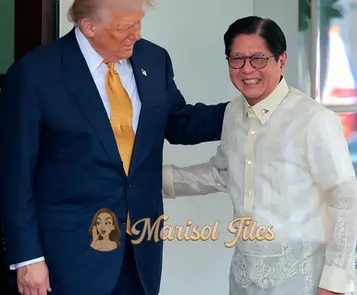U.S. Lowers Tariffs on PH Exports After Marcos-Trump Dialogue
By Inday Marisol | July 24, 2025

Table of Contents
MANILA — The United States has officially trimmed tariffs on select Philippine exports from 20% to 19%, following a high-level bilateral meeting between President Ferdinand Marcos Jr. and former U.S. President Donald Trump in Washington, D.C., earlier this week.
The decision, while seemingly modest, signals a renewed effort to strengthen economic ties between the two long-time allies amid shifting global trade dynamics.
A Strategic Economic Signal
The tariff cut, which applies to a limited range of Philippine goods including textiles, agricultural products, and electronics components, is seen as a goodwill gesture aimed at boosting bilateral cooperation and easing trade barriers for Filipino exporters.
“Even a 1% reduction translates to millions in saved costs for our exporters,” said a senior official from the Department of Trade and Industry (DTI). “This helps level the playing field and improves our competitiveness in the U.S. market.”
While the reduction is small in numerical terms, it comes at a critical time as the Philippines seeks to recover momentum in its trade sector, which has been challenged by high logistics costs and global supply chain disruptions.
🤝 Marcos-Trump Trade Dialogue
President Marcos Jr. and former President Trump reportedly held a closed-door discussion focused on regional security, trade facilitation, and strategic investment on the sidelines of a private event in Washington.
Trump, who remains a powerful figure in U.S. Republican politics and a likely 2024 presidential candidate, expressed support for deeper cooperation with the Philippines.
“We’ve always had a great relationship with the Philippines. We want to keep that strong and growing,” Trump told reporters briefly after the meeting.
According to Malacañang, the two leaders discussed the potential for broader trade preference programs and mutual investment incentives in key sectors like semiconductors, energy, and agribusiness.
📉 Tariff Cut Impact
The tariff reduction from 20% to 19% may appear symbolic, but trade economists say it sets the tone for further policy changes.
- A 1% cut can lead to up to $50–75 million in annual savings for major Philippine exporters, depending on volume.
- It could stimulate demand for select Philippine goods in the U.S., especially in price-sensitive markets like apparel and food products.
- The reduction may also boost investor confidence in ongoing trade negotiations.
💬 Industry Response
Key trade groups welcomed the development, urging the government to capitalize on the momentum.
“This shows that diplomacy works. We hope this opens the door to expanded preferential trade access like GSP or even bilateral FTA talks,” said Sergio Ortiz-Luis Jr., president of the Philippine Exporters Confederation (PHILEXPORT).
U.S.-PH trade relations have been stable but have lacked breakthrough updates since the expiration of the Generalized System of Preferences (GSP) in 2020. The Philippines has been lobbying for its reinstatement.
🔍 What’s Next?
Analysts say the tariff reduction may be a trial balloon for broader trade reforms under a potential new U.S. administration. With ASEAN playing a growing role in Indo-Pacific strategy, the Philippines’ positioning could prove critical in future negotiations.
Meanwhile, Philippine officials are expected to push for further reductions and potentially revisit discussions on a U.S.-PH Free Trade Agreement (FTA).
📌 Disclaimer
This article is for informational purposes only and reflects the latest available information as of publication. Trade agreements and tariff rates are subject to official updates from government agencies.
Sources
- Philippine News Channels
- Malacañang Official Statement
- U.S. Trade Representative Press Release
- Interviews with PHILEXPORT and economic analysts
- International Trade Data Watch (ITDW) – 2025 Midyear Outlook

Maria Sollen Castor, known as “Inday Marisol,” is a skilled and experienced content writer. Renowned for her engaging and authentic style, she crafts compelling content that connects with readers and resonates across platforms.
